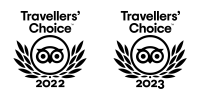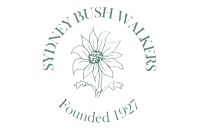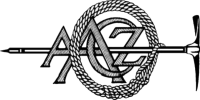Kailash Travel Guide
A COMPLETE MOUNT KAILASH TRAVEL GUIDE
Planning a trip to Mt Kailash and lake Mansarovar is not a luxury travel destination. Traveling to Kailash and Mansarovar lake is a spiritual and pilgrimage tour for the people who believe in Kailash as a sacred and holy Mountain. For others, who are traveling to Kailash and Mansarovar lake is a mystical and adventure tour once in a life time therefore one must not expect to have luxury or very comfortable hotels and resorts during your Mt. Kailash adventure tour. If you are looking for a luxury travel, then Kailash is not a right choice of your trip.
How to travel to Mount Kailash
Foreign tourists can only go to Mount Kailash as part of an organized tour and you will have to go through a travel agent who can arrange your Tibet entry permit and necessary Mount Kailash permits. There are more permits required to travel to Mount Kailash than normal Tibet tours so the Mt Kailash tour permit takes longer period of time to finish since the Tibet travel agent needs to get Kailash permits from several different departments of the government office so we recommend to book the Mount Kailash trip in a month advance.
How to get to Mount Kailash
There are three main ways to get to Mount Kailash.
From Simikot to Kailash is one of the tourist choices that the tourists can fly from Kathmandu to Nepal Ganj and from Nepal Ganj to Simikot. From Simikot, you can have 6 days trek in the Limi valley of the west Nepal all the way to Sher border which is close to Purang county in Tibet, known as Taklakot. Purang county is located to the south of Mount Kailash at the distance of 120km.
From Kathmandu to Kailash via Kyirong border, another way to get to Mount Kailash and it is an overland tour from Kathmandu to Kyirong border at the distance of 150km and continue to Mount Kailash and back to Kyirong.
Kyirong is the biggest border between Nepal and China Tibet. Kyirong is a multi-national tourist crossing border and it is also a very important commercial border between Nepal and China Tibet. You can see hundreds of Nepalese support truck, transferring the goods from Kyirong to Kathmandu.
From Lhasa to Kailash, Flying to Mount Kailash from Lhasa and back to Lhasa is between 9-10 days program and many tourists who don’t have much time choose this option even if the flight cost is expensive. Since there is only one daily flight between Ngari prefecture and Lhasa, we recommend you to book the Mount Kailash tour by flight from Lhasa in two months advance as the flight tickets between Lhasa and Ngari prefecture are extremely busy during the peak season and extremely difficult to get. The peak season is April to October.
Accommodation: Fixed Two or Four men tents at each transit camp will be provided for accommodation except for Guest House at Nyalam. While Camping we shall be providing mattress and camping equipment requires for the trip excluding personal clothing and sleeping bags. Accommodation in guest houses will be very simple with a cozy room with commotoilets. Hot water will be provided in every room for a refreshing and for drinking.
Food: We will be providing vegetarian Breakfast and dinner cooked by our Sherpas at Camp Site, who will be taken from Kathmandu. You will be required to bring sufficient supplementary food like biscuits;, nuts, pickles, freeze-dried milk and your favorite tinned products to add variety to the meals. Lunch will be packed of light snacks.
Transportation: During the drive, we will be providing a 4 wheel drive (Land cruiser or similar), the truck as a backup with all camping gear and crew. A maximun 4-5 person will be accommodated in a land cruiser.
While on trek, during the Kora, we will provide Yaks or porters to carry the camping & your personal light luggage.
Staff: Sherpas who are capable to work & cook on high altitude will be accompanying the group. They will be in charge of the setting of tents, cooking, etc.
Clothing & Accessory: Depending upon the season, during June, July, August till September, day time will be pleasant and quite warm with about 15-20 degrees Celcius. During afternoon time 1-4 pm can be windy. The morning and evening will be chilly between minus 2 to 0 degree Celsius.
We recommend that you bring the following items to make your Journey more Comfortable.
One down jacket, one warm thick pull-over, one thin pull-over, two warm pants, two light loose cotton pants, one warm windproof cotton jacket, four cotton sleeve T-shirts, two thermal underpants, two thermal vests.
One raincoat (should be roomy & have a waterproof hood), one pair each of light tennis shoes & light rubber sandal, six pairs of warm woolen socks, one light cotton or silk scarf, one large cotton or silk scarf, one pair of warm gloves, soft paper tissues, monkey cap & sun hat, two towels, Wind - Rain Jacket, sun hat, sunglass with side cover, sun cream, chapstick.
Guide/ Escort: A Tibetan/ English speaking guide will escort the group throughout the trip including Nepali staffs for the camping.
Photography: As Tibet get very bright sunlight due to thin air, so taking photographs can be quite a glare. We recommend you to take the advice from the photographic shop while purchasing the film rolls for Tibet. Taking photographs inside monastery will be charged as per Monastery rule. Please ask your guide before taking photographs inside the monastery or Army Camps.
Medicine: We suggest you bring your own first aid kit with adequate medication regarding altitude sickness, nausea, dehydration, and some pain killers.
Insurance: We highly recommend all clients to be insured against Medical, accidents & necessary emergency evacuation, if needed.
Physical Fitness: Before booking for this trip with us, clients should be in sound good health preparation for this trip. We advise a bit of exercises like morning or evening walk or jogging.
Visa & Documentation: Clients must be in possession of a valid passport to obtain a visa. We will require the following details from your passport at the time of booking the trip - Full Name as in Passport, Nationality, Date of issue & expiry of Passport, Passport No, Date of Birth & Occupation
Altitude Sickness: Acute mountain sickness is a frequent problem in the Himalayan region. The altitude of the peaks and trails between them are among highest on earth. Acclimatization to the altitude above 3000 meters takes time. The body undergoes a number of physiological changes some of which are immediate like increased pulse rate & respiratory rate. Others appear more slowly over a period of weeks like the change in acid-base balance and production of extra red blood cells.
These changes plus the effect of intense sunlight, walking hard & dehydration may cause a number or mild vague symptoms such as Loss of appetite, fatigue, headache, nausea, dizziness, palpitations, sleeplessness, mild shortness of breath with exercise.
The best treatment is prevention! Avoid rapid ascends, take acclimatization symptoms seriously using rest days or diamox. If symptoms are severe and the patient is ill DESCEND IMMEDIATELY, 300 Meters of descent or more should be sought. This usually gives rapid improvement.
Payment: A 50% deposit must be sent in advance to our company or its associates. Balance 50% should be paid at least 30 days before the trip departure.
Cancellation & Refund Policy: If the booking is canceled 30 days prior to departure, INR 11500 or USD 320.- net per person would be charged as cancellation amount.
- If the booking is canceled 15 days prior to departure, INR 23000 OR USD 640.- would be charged as cancellation amount.
- If the booking is canceled 07 days prior to departure, there will be no refund.
- If CTTB does not operate a particular tour, a full refund will be made of the tour.
Equipment on Trip:
We provide 2 men roomy tents to sleep in. We also provide Dining Tent, Kitchen Tent, Toilet Tents, Dining Tables, Folding Chairs and full kitchen utensils. We will provide Sleeping Bag and Foam Mattress for bed.
Personal Equipment Check-List: You need at least 3 pair of change of your clothing for this trip. Shorts, skirt or lightweight trousers are ideal in the heat of the day along with a T-shirt, long-sleeved cotton shirts and sun hat. During the evening and the higher altitudes warmers, clothing will be needed, breeches, track.
Well, fitting, comfortable boots are to be preferred over training shoes for the actual trekking and clothing will be required for both extremes of climate, for hot sun when trekking through the lower foothills to freezing temperatures at night when camping in the high valleys.
Fibre Pile Jacket: 1
Shorts Or Skirt: 1
Light Cotton Trousers: 1
Breeches /Track Suit Bottoms /Ultra Fleece Trousers: 1
Duvet Jacket: Down or synthetic
Wool Balaclava, Wool Mitts
Waterproofs: Jacket & trousers
Sun Hat, Scarf: Silk/Nylon, useful for keeping the sun off the back of your neck. SUNGLASSES / GOGGLES with side covers: Essential to get a pair which cuts out 100% UV rays.
Sun Cream: High protection factor [15 or higher] or high altitude glacier cream
Lip Slave/Labisan: protection for the lips. Get one with a sunscreen
Water Bottle: 1 liter metal
Iodine: 2% Solution [Tincture Of Iodine] obtained from most chemists put into a small glass dropper bottle. 8 drops of iodine will sterilise 1 liter of water in 20 minutes.
Toilet Items:
Soap, Towel, Toothbrush, Toothpaste, Shampoo, Comb, Sanitary protection, Toilet rolls [2], etc. Toilet paper is provided on Trek.
Head Torch: [Petzl recommended] - spare batteries and bulbs Sewing kit, Small Knife: Swiss army style - has many uses
Notebook/Diary/Pens, Small Padlock: Useful for locking your kit bag 4 Passport Size Photographs A Copy Of Your Insurance Certificate
Money Belt Reading Material: [1 book], Walkman and 2 tapes - for those early nights. Spare batteries, Chocolate Bars, Sweets!, Personal Medical Kit.
Small Plastic Bags /Stuff Sacs Or Pillow Cases: To separate and keep the gear in your kit bag in order Cigarette Lighter: for burning toilet paper and rubbish.
Optional
Ski Stick: Telescopic for easy carrying
Thermarest: Or similar self-inflating mattress, gives decadent luxury Camera Gear
Games: Cards, chess, etc. for the evenings.
Umbrella: Not only for rain, makes a great sunshade Wet Wipes: Or similar.
Insurance & Emergency Expenses: We suggest that clients insure themselves against a comprehensive claim policy. Which should also include Helicopter Evacuation if necessary.
Please note that our Kailash Tour Package does not include any rescue or evacuation expenses in emergencies. Any Emergency arrangement other than regular straight forward tour itinerary service should be borne by the client themselves.
Camera & Films: A 35 mm system with an interchangeable lens will allow you to get the best shots in most situations. A wide angle [28-35mm] and a telephoto [80-200mm] are very useful. Skyling filters protect your lens [skylight IB] and a polarizing filter is useful for snow scenes. A brush for cleaning your lens is important and your camera and lens need to be in protective cases. Kodachrome 64 is excellent for slides and for prints 100 ASA film is suitable. Faster films may be needed if using zoom lenses and 200 ASA film would be required. 12 rolls of film per yatra are not too many for the enthusiast.
General Considerations when Packing: Keep the weight and bulk down to a minimum. Baggage allowance on most international flights is 20 Kg's/44 lbs.. Most people tend to bring more clothes than they do actually need. You will only need one change of clothes for Kathmandu. On trek it is important to dress in layers. When it is hot you will only be wearing a base layer, when it gets colder you can add to this until you are wearing most of your clothes!
Personal Medical Kit: We suggest that you bring the following:
Elastoplast Adhesive tape-4" crepe bandage Elasticated knee and or ankle support if you experience strain these joints Blister dressings, e.g. moleskin, compead, spenco dressings Nasal- Decongestant Throat lozenges/ glucose sweets * Wide spectrum antibiotic [Ciproxin recommended]
Anti-diarrhoea - Immodium or Lomotil
* A course of Flagyl [treatment of giardia]
* Codeine Phosphate - constipation, cough suppressant, pain killer,
Cold/flu suppressant, Aspirin, and paracetamol. Rehydrate powder - useful for adding to your water bottle and for fluid replacing purposes.
Small pair of scissors and other special medicines you require
Responsibility/Liability:
All arrangements within Tibet are solely at the discretion of the China Tibet Tourism Bureau (CTTB), a government organization, CTTB reserves the right to change itineraries without advance notice, depending on the weather and road condition. Yeti Travels Pvt. Ltd. acts as an intermediary between the concerned airlines, hotels, transport/tour- operators and local tourist offices providing the services. Yeti Travels or its PSA or its subagent is therefore not responsible for any loss, injury sustained by the tourists, including those occurring outside the touring programs. Additional expenses incurred due to delay, accidents, natural disaster, political actions and unrest must be borne by the tourists. Program, prices, services, and conditions are based on those valid at the time of printing and are therefore subject to change without advance notice before or during the tour.
"Any part of unutilized services is non - refundable"
Participation in our tour implies the tourist's agreement to the above conditions.
DO & DONTS in Kailash Mansarovar Trip
- Treat the mountains with respect & don’t show your heroism there.
- Walk in rhythmic pace, it will save you from early tiredness & accidents.
- Drink a lot of water during trekking. Liquid diet will always help you. Keep 3-4 packets of electrol to be used during Kora (Parikrima).
- Apply sun cream on exposed body parts, especially during Kora (Parikrima).
- Mansarovar Lake water is usually very cold & if your body doesn’t allow, then don’t go far bath there. Sprinkling Mansarovar Lake water on body is believed equally to bath.
- Trek in small groups. Trekking alone may result in risk.
- Liaison Officer is supposed to be most experienced person for journey. All must follow his instructions in all circumstances.
- Make sure to take proper meals throughout journey. Liquid diet will give you strength.
- Don’t carry heavy bag pack during Kora (Parikrima).
- Never consume Alcohol during Journey.
Documents to carry:
- You are advised to own a small waist pouch or document bag to manage the following documents properly;
- Passport with Photostat copies Photographs, Identity card, Diary for addresses, contacts, small notes etc.
- Ball pens with spare refills Maps/Charts/Books etc.
- Travel Cheques, credit cards & Currency.
- Airline/Railway tickets/vouchers.
- Any other document for personal purposes.
Things not to carry/do:
- Any books, magazine, pictures about Tibet, Buddhism or about any Lama’s. The custom of China won’t allow entering with those kinds materials.
- Do not take any pictures and videos in Chinese customs, Army and police station.








